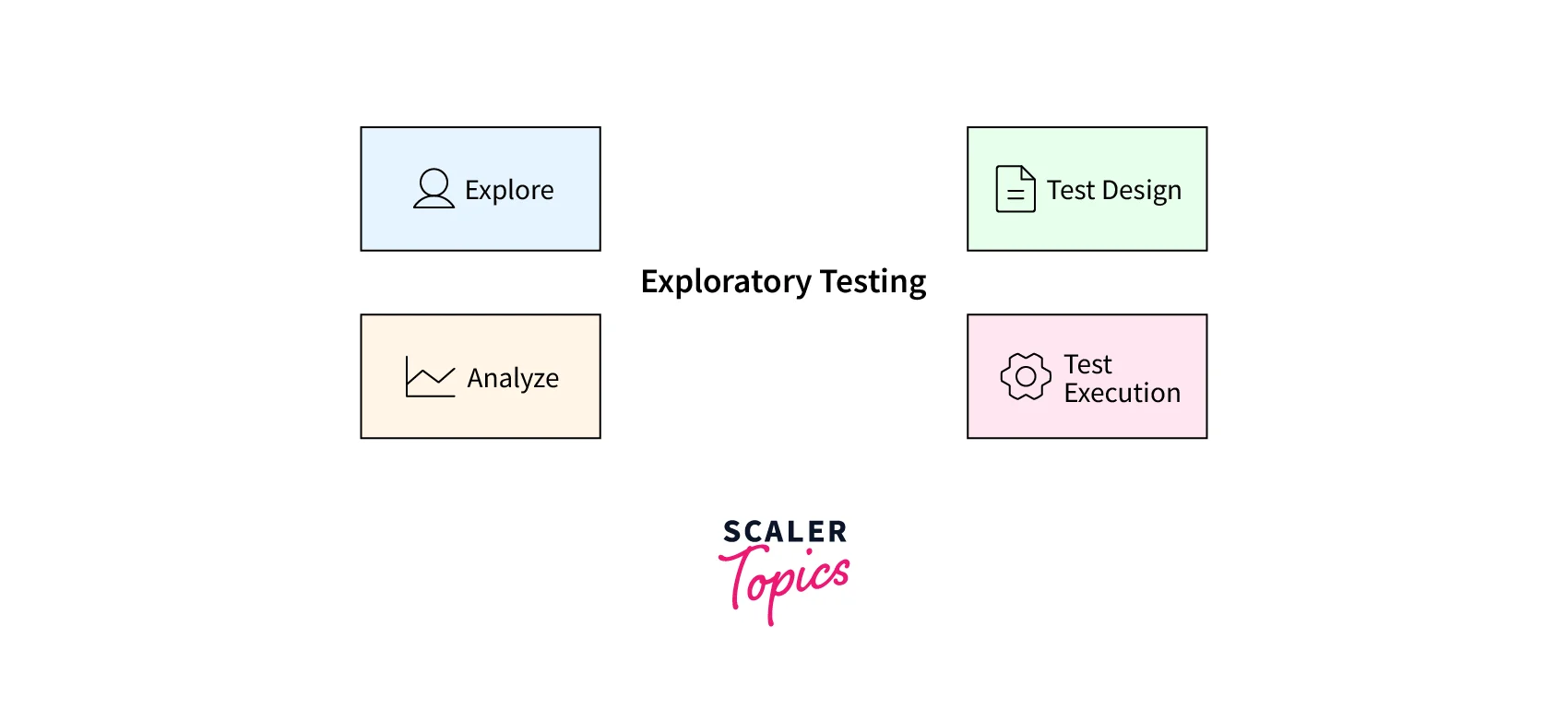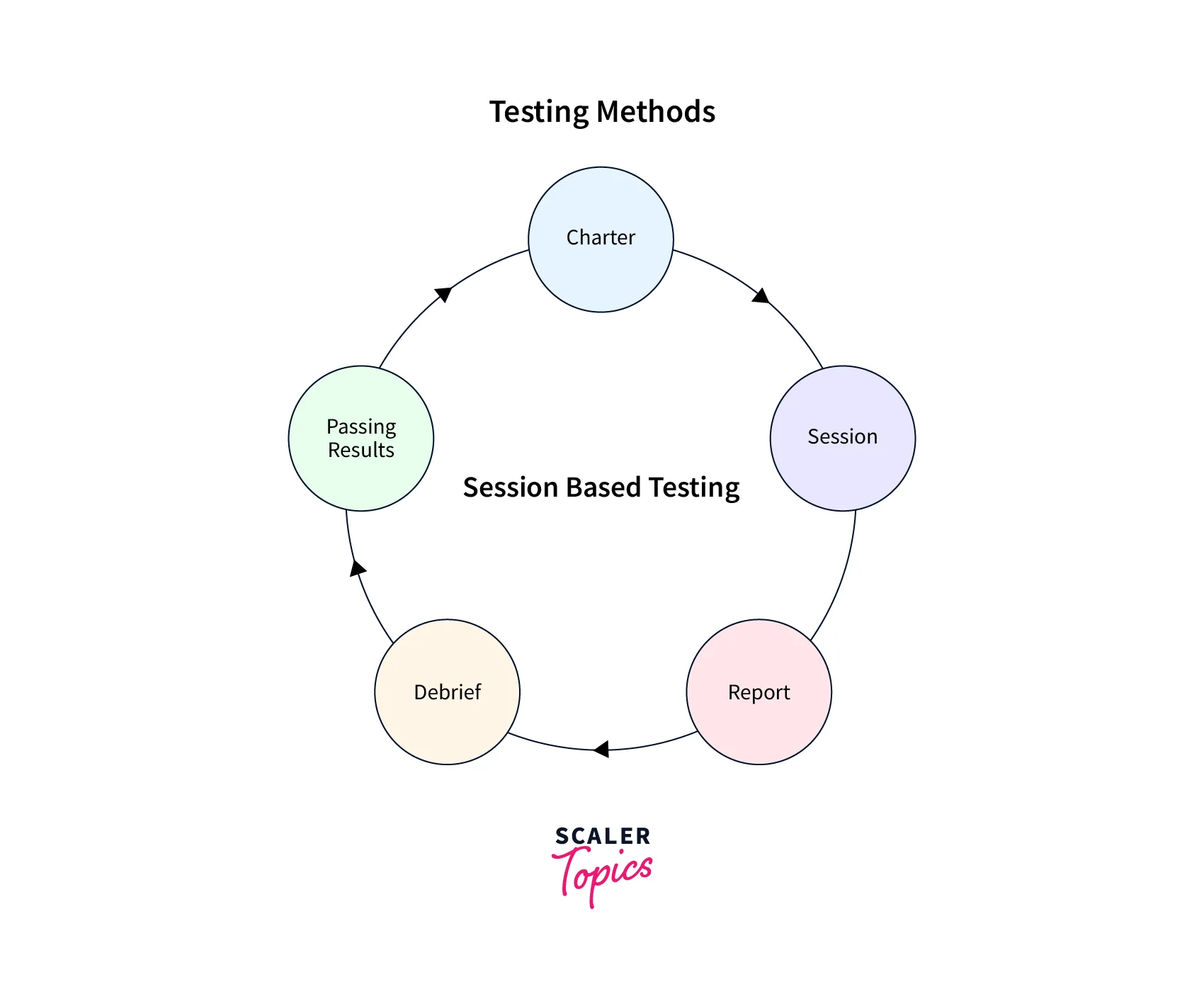Session-based Testing in Software Testing
Overview
Session-based testing in software testing is an effective approach that many software companies use these days. In this, testers break up their testing activities into shorter, structured sessions, each with a clear goal and time limit. This approach can also help teams identify issues and bugs earlier in the software development process which can lead to faster resolution of bugs and better overall software quality and reliability.
Introduction
Session-based testing and exploratory testing are two approaches to software testing that share many similarities, but they differ in several ways. While both approaches are intended to uncover potential issues in software, session-based testing offers a more structured and systematic approach than exploratory testing.
Although both approaches have their advantages, session-based testing offers a more focused and structured approach that can improve the efficiency and effectiveness of software testing.
What is Exploratory Testing?

Exploratory testing is a highly dynamic and flexible approach to software testing that focuses on creativity and intuition over pre-defined test cases. In exploratory testing, testers are made to investigate the software in new and innovative ways using their expertise and knowledge of the system to find new potential issues. This approach can be highly effective in identifying bugs that generally go unnoticed as testers can adapt their approach based on their observations and insights.
However, exploratory testing can be challenging to achieve as it relies heavily on the tester's knowledge and experience. It can be difficult to track the progress of exploratory testing or replicate results without good knowledge. Additionally, exploratory testing may not be suitable for all types of software or testing environments, as it may not provide the level of structure and repeatability required by some organizations.
What is Meant by the Session Based Testing(SBT)?

Session-based testing (SBT) is a structured approach to software testing that involves breaking testing into a series of focused and time-limited sessions. Each session typically lasts between one and two hours and is designed to be a focused testing effort with a specific goal in mind. The tester is provided with a set of instructions and a clear mission to accomplish during the session which may involve testing specific features or uncovering specific types of bugs or issues. This also provides a structured framework for testing that can help to ensure that all areas of the software are thoroughly tested while also enabling testers to maintain a high level of focus and efficiency.
One of the key advantages of SBT is its ability to provide a structured and systematic approach to software testing along with flexibility and creativity. By breaking testing into focused, time-limited sessions, testers can maintain their focus and ensure that all areas of the software are thoroughly tested, while still allowing for a degree of flexibility and adaptability in the testing process. SBT also provides a clear and consistent method for tracking progress and reporting issues, which can help to ensure that testing is transparent and effective.
Advantages and Disadvantages
Advantages
- Consistency:
SBT provides a structured and consistent approach to testing which can help to ensure that all areas of the software are thoroughly tested and that issues are identified and reported consistently. - Transparency:
SBT is a structured approach to testing as it provides a clear and consistent method for tracking progress and reporting issues. This transparency can help to ensure that testing is transparent and effective, and can facilitate communication between testers, developers, and other stakeholders. - Flexibility:
Session-based Testing provides a structured framework for testing as it allows for a degree of flexibility and adaptability in the testing process. This flexibility can ensure that testing is efficient and effective, while still allowing for a degree of creativity and innovation.
Disadvantages
- Time-consuming:
SBT requires a significant amount of planning and preparation, as well as the allocation of dedicated testing resources. This can make it a time-consuming approach, which may not be feasible in fast-paced organizations. - Resource intensive:
SBT requires a structured approach to testing and it may require more resources than other types of testing. This can include not only dedicated testing resources, but also the development of test plans, checklists, and other materials that are required for effective SBT increasing time and other costs. - Limited flexibility:
SBT allows for a degree of flexibility and adaptability in the testing process as it is still a structured approach that may not be suitable for all types of software or testing environments and some organizations may require a more flexible approach which is not the case with SBT.
Components of Session-Based Testing
The success of Session-based testing depends on several components listed as follows:

- Mission:
The mission is the primary goal of the testing session and is typically a specific testing objective or area of the software that needs to be tested. The mission should be clearly defined and communicated to the tester before the session begins so that they can focus their testing efforts on achieving the mission. - Charter:
The charter is a set of instructions or guidelines for the testing session, and should provide clear direction to the tester on how to achieve the mission. The charter may include details on what to test, what not to test, what data to use, and other important information. - Session:
The session is the actual testing period which typically lasts between one and two hours. During the session, the tester works to achieve the mission and follow the charter, while also identifying and reporting any issues that they encounter. - Session Report:
The session report is an important written summary of the testing session, which includes details on what was tested, what issues were found, and any other important information related to the session. - Debriefing:
After each session, the tester participates in a debriefing session which provides an opportunity to review the testing session, discuss any issues or concerns that were identified, and provide feedback on the testing process. - Parsing:
Parsing is also an important process of reviewing and categorizing the issues that were identified during the testing session and it involves assigning each issue to a specific category or priority level, which can help to ensure that issues are addressed in the appropriate order and with the appropriate level of urgency.
SBT's Tools
To effectively manage the SBT process, there are a variety of tools available that can help testers to plan, track, and report on their testing efforts. Here are some of the key tools used in SBT:
- Test Explorer:
Test Explorer is a visual tool for managing and executing test cases. It helps testers create and organize test plans, manage test execution, and track test results. - Rapid Reporter:
Rapid Reporter is a simple tool for capturing notes and observations during testing sessions. It allows testers to record session details, take notes on bugs and issues, and track testing progress. - Session Tester:
Session Tester is a comprehensive tool for managing SBT. It includes session planning, test case management, issue tracking, and session reporting, and is designed to make it easy for testers to manage their testing efforts. - Atlassian Bonfire:
Atlassian Bonfire is a tool for capturing bugs and issues during testing sessions. It integrates with various bug-tracking systems and provides a streamlined interface for capturing and reporting on issues. - Capture Fox:
Capture Fox is a tool for recording testing sessions as video files. It can be useful for documenting testing efforts, sharing testing results with other team members, and providing a visual record of testing sessions. - The Scan Tool:
The Scan Tool is a tool for automating the process of testing software for security vulnerabilities. It identifies common vulnerabilities such as cross-site scripting, SQL injection, and directory traversal, and helps ensure that software is secure and free from vulnerabilities. - BB Test Assistant:
BB Test Assistant is a suite of testing and debugging tools for Windows applications. It includes screen capture, log file analysis, and error reporting features, and helps testers identify and resolve issues during the testing process.
Conclusion
- Session-based testing and exploratory testing are two approaches to software testing that share many similarities, but they differ in several ways.
- Exploratory testing is a flexible approach to software testing that relies heavily on the tester's knowledge and experience, while session-based testing is a structured approach that breaks testing into a series of focused and time-limited sessions.
- While exploratory testing is highly dynamic and flexible, session-based testing provides a structured and systematic approach to software testing.
- Session-based testing offers a more focused and structured approach that can improve the efficiency and effectiveness of software testing.
- The advantages of session-based testing include consistency, transparency, and flexibility, while the disadvantages include time consumption, resource intensity, and limited flexibility.
- The success of session-based testing depends on several components, including mission, charter, session, session report, debriefing, and parsing.
- SBT offers a wide range of tools to assist testers so that testers work more efficiently and effectively to ensure high-quality software products.
